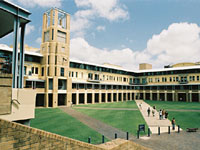|
|||||||||||||||||||||||||||||||||||||||||||||||
| Behavioural Optometry 1 - OPTM7103 | |||||||||||||||||||||||||||||||||||||||||||||||

Description Behavioural Optometry is one of the fastest developing clinical areas in optometry. It embodies a broad clinical approach to the practice of optometry by considering vision in the context of other sensory motor systems. This course covers the scientific and theoretical background to behavioural optometry, the neuroscience of visual function, developmental vision, the development of myopia, the clinical recognition and evaluation of efficient visual function, strabismus & amblyopia, and the optometric management of learning disabilities. Assignments require the clinical application of behavioural concepts to simple and complex cases, so all participants must have access to a variety of optometric patients, including children. Overseas students must arrange this with the course controller prior to enrolment. Together with OPTM7203 Behavioural Optometry 2, this course forms the foundation program for candidates for a Fellowship of the Australian College of Behavioural Optometrists.
|
|||||||||||||||||||||||||||||||||||||||||||||||


